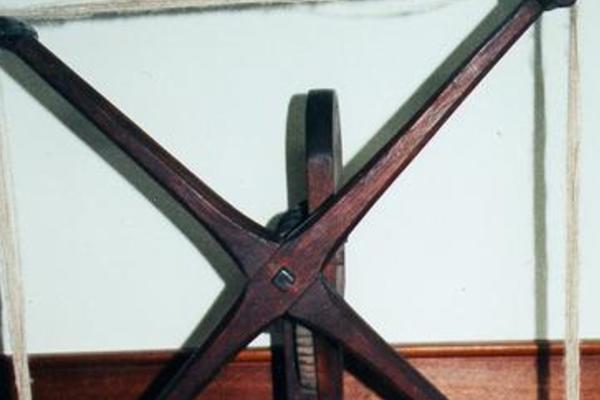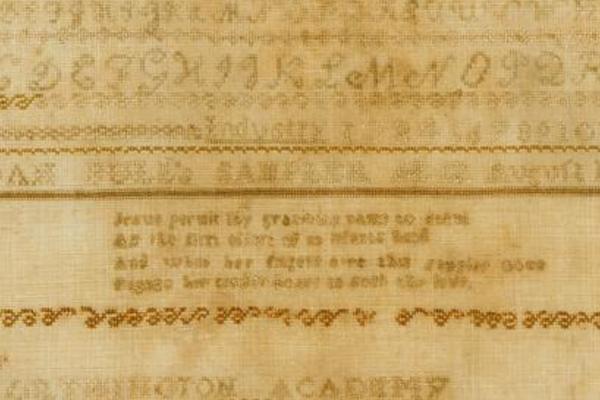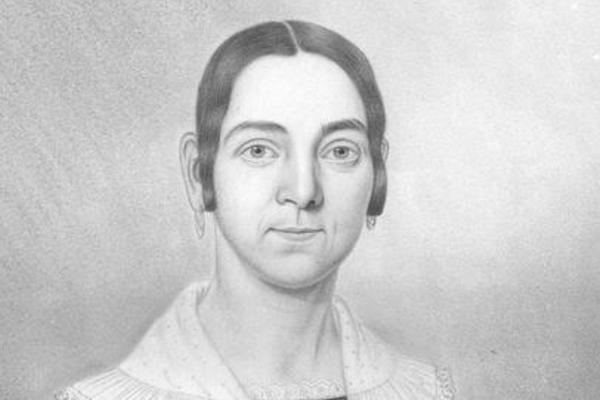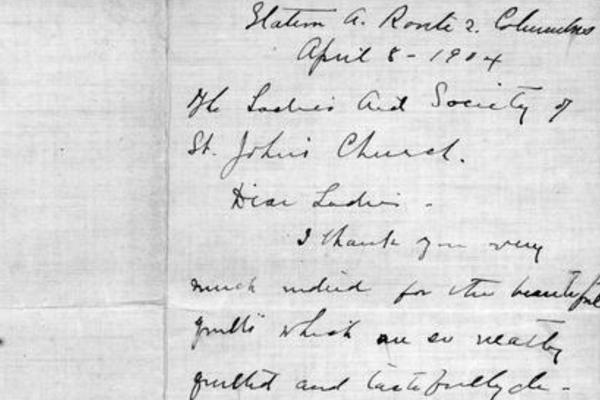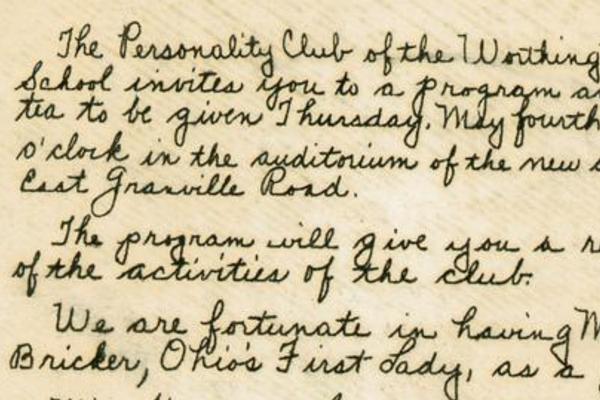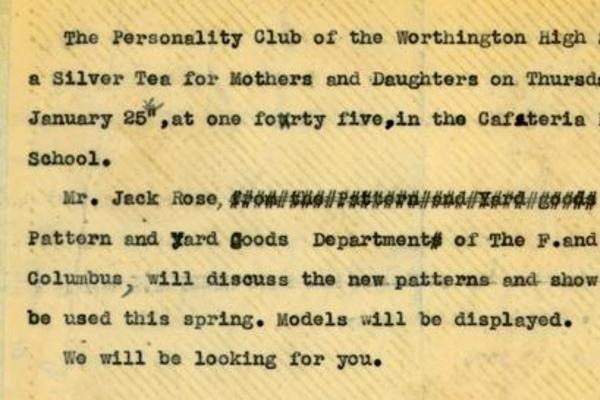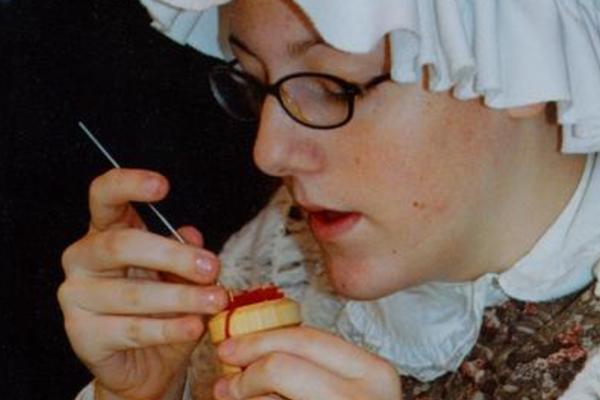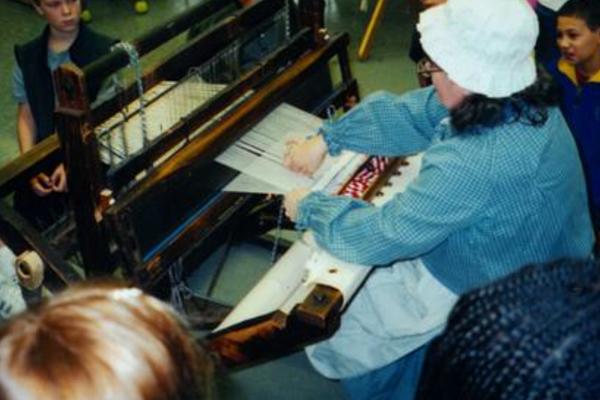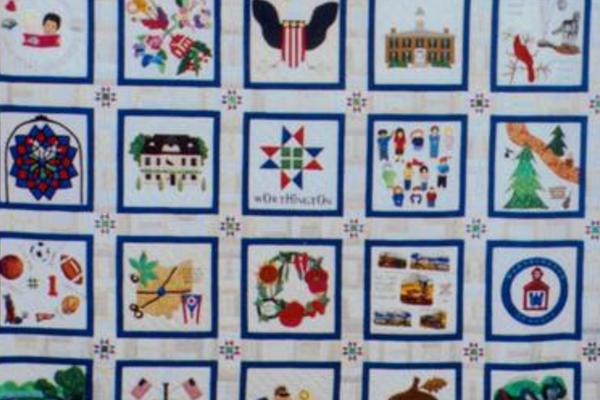Monday,
July 1, 2019
9:30am
Got yarn? Our July exhibit celebrates the skill Worthington residents have shown through the decades with needlework, knitting, sewing, quilting and other fiber arts.
When the first settlers arrived in Worthington in 1803, their required skill set included needlework because cloth and clothing had to be produced at home. Spinning, weaving and sewing clothes were time-consuming, but important economic functions in most households around 1800. Most people had only one or two changes of clothes, as textiles were very expensive. The clothes were usually made of linen or wool, fibers that could be produced on farms. Cotton was a warm-climate crop, and not heavily used in the United States until Eli Whitney invented the cotton gin in the early 1790s. Cotton textile manufacturing in New England, using water power, led to inexpensive fabrics and the demise of home weaving and spinning by the mid-1800s.
An 1800 yarn winder was among the items brought to Worthington in 1803 by Ruth Roberts Griswold (1768-1847) from Simsbury, Connecticut. Ruth was the wife of Ezra Griswold, Scioto Company proprietor. Known as a "click reel," the reel of the yarn winder had a mechanism that would count the winder's turns to help the user make skeins of yarn of uniform length.
As most clothing was made by hand at that time, the ability to do needlework, both plain and fancy, was a vital part of a girl's education. Many girls made samplers, like the 1812 linen sampler made by Huldah Bull, age 12, at the Worthington Academy. Such samplers let girls practice various stitches and display their skill. (Most needlework then, as now, was done by women.)
A lifestyle change in Worthington in the mid-1800s was marked by the arrival of Olive Loring, first Worthington milliner (a maker and seller of hats). This meant that rather than needing the pioneer skills of weaving, spinning, dying and sewing, local women could buy hats and dressmaking services.
In the first half of the 1900s, sewing and knitting remained important as the Great Depression meant many could not afford to buy ready-made clothing and the war efforts brought a demand for knitted garments. Signs of poverty were clear in Worthington during the Depression. In 1933, a newspaper article extended an offer from Mrs. Lewis to help people improve their sewing skills so they could make and mend clothes. A Worthington mother, Mrs. Miriam Mackay, established the Personality Club in 1937 after learning some high school girls didn't attend a school party because they lacked nice-enough dresses. A group of mothers began to meet weekly to repair and alter older clothes and sew new dresses. The need for needlework skills during World War II is evident in a 1943 newspaper that asked women to help the Red Cross with the knitting of socks, mufflers and sweaters for men in the military.
Quilting was an important social activity for women during the 19th and early 20th centuries. Women of St. John's Episcopal Church of Worthington have a long tradition of making quilts, dating back to the 19th century. The entire Worthington community worked to create the Legacy Quilt commemorating the city's bicentennial in 2003. The signatures of over 800 community members are incorporated into the quilt.
Today, sewing and needlework are mainly viewed as crafts used for artistic or charitable purposes. This is seen in Worthington Libraries' annual effort, Warm Up Worthington, for which community members knit or crochet squares to create blankets for local charities.

